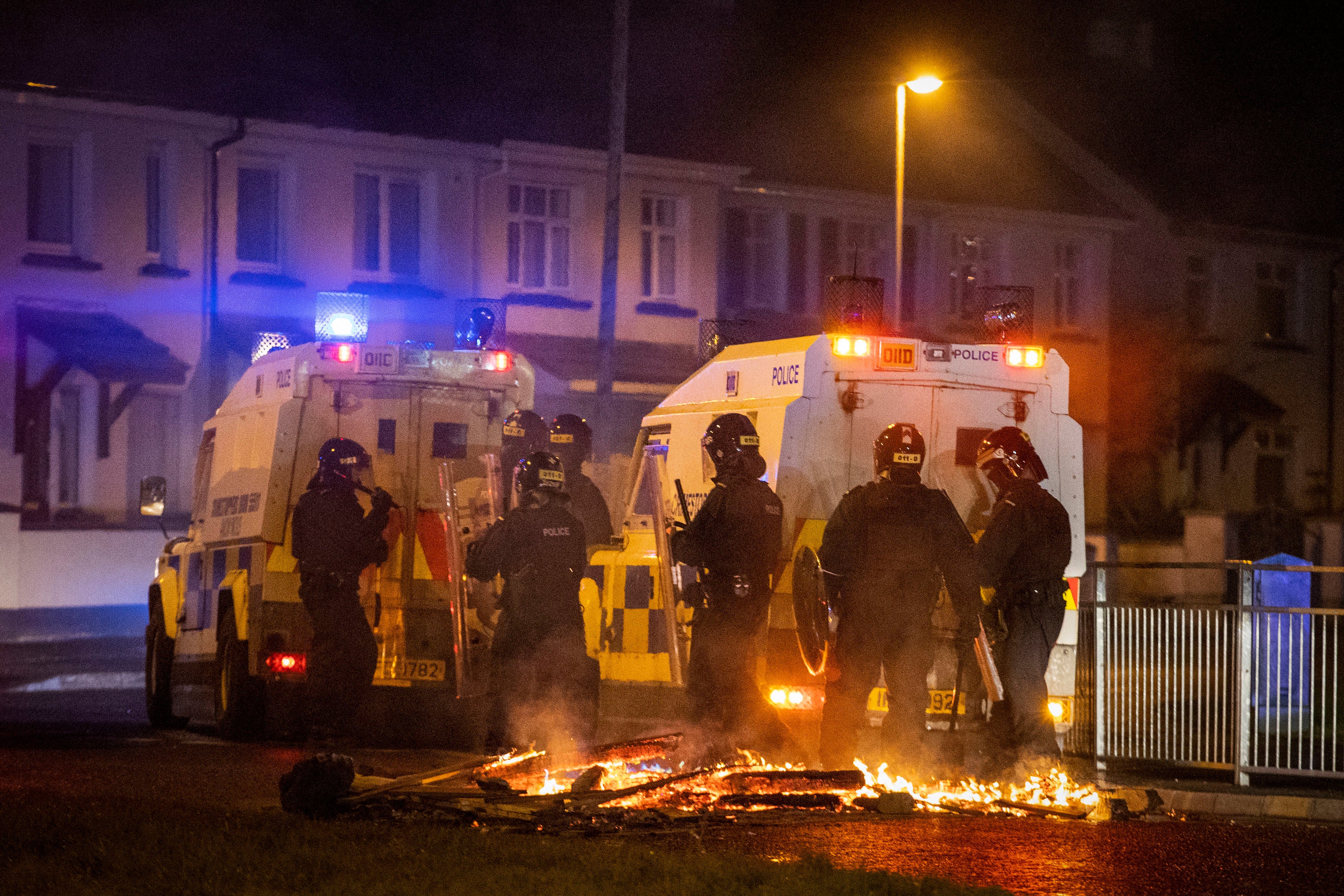The violence in Northern Ireland highlights Boris Johnson’s dangerous Brexit miscalculations
Petrol bombs are thrown, and will continue to be, while unionists feel they are being separated from the rest of the UK, writes John Rentoul


Violence on the streets of Belfast, Derry, Carrickfergus and Newtownabbey has several causes and one common theme. The immediate trigger seems to have been the decision not to charge Sinn Fein politicians, including Michelle O’Neill, the deputy first minister, who took part in a funeral procession in June last year for Bobby Storey, an IRA figure, that defied coronavirus restrictions.
Another cause may have been a recent police crackdown on criminal gangs linked to former loyalist paramilitaries. Those sparks fell on loyalist tinder that had already been dried by the disruption caused by the Brexit border in the Irish Sea.
The common theme is the perception among unionists that the constitutional balance in Northern Ireland has tilted against them. The dire warnings during the Brexit negotiations about the danger of a return to violence tended to focus on the republican side. The sacred status of the Good Friday Agreement was invoked as an argument against the horrors of a hard border between north and south, which would, we were told, provoke a violent republican response.
Yet the Good Friday Agreement is a complex balancing mechanism, designed to keep both sides in government. The story of the Northern Ireland peace process has always been that of the see-saw. Brexit tipped the see-saw away from the goal of a united Ireland, because one part of the island of Ireland would be out of the EU and the rest would be in. The Northern Ireland protocol was an attempt to tip it back, but Boris Johnson tipped it too far and now there are petrol bombs being thrown at the police.
The decision by the whole of the UK to leave the EU (56 per cent of voters in Northern Ireland voted to Remain) prompted an immediate consensus that there should be no hard border in Ireland. But that decision then posed two further questions, which Theresa May and Johnson answered differently. How much of a break with the EU? And where to put the border checks that would result? May opted to keep the UK in the EU’s customs union, which meant she could put the border where the unionists wanted it. Hers would have been a soft border on the island of Ireland, with goods checked at a distance away from the line on the map.
Read more:
Johnson went for a maximum break with the EU economy, but because Northern Ireland remained in the EU single market for goods, that meant putting the border where Sinn Fein wanted it, namely between Northern Ireland and the rest of the UK.
This happened partly because of a historic misjudgement by the Democratic Unionist Party, which voted against May’s withdrawal agreement, thus ensuring that it got something that it now realises is worse. The DUP is reaping the whirlwind, and Johnson may be beginning to realise that the problems he stored up for himself by “getting Brexit done” are coming back to haunt him.
The strain on the unity of the country was one of the reasons May (otherwise a Eurosceptic) advocated remaining in the EU, and it was always a risk to which other members of the Conservative and Unionist Party seemed recklessly indifferent. A majority of Scots seem to be about to vote for parties committed to a second independence referendum in the Scottish parliament elections; support in Northern Ireland for unifying with the Republic is now at 43 per cent; and even in Wales (whose people voted to leave the EU) support for independence is higher than ever, at 39 per cent.
Johnson, who was feted at a DUP conference before he became prime minister, is going to have to tip the Northern Irish see-saw again. That is why the UK government has upset the EU by extending the grace period for checks on goods arriving in Northern Ireland from the rest of the UK: the prime minister has to find a way of making the Irish Sea border as intangible as possible.
As ever, problems in Northern Ireland are never just about practical policy: they are about which side feels respected. At the moment, enough unionists feel disrespected enough for violent “loyalists” to take to the streets. I don’t know if there is a way to fix the border in the Irish Sea, but Johnson needs to try and to be seen trying. Brexit is not done yet.
Join our commenting forum
Join thought-provoking conversations, follow other Independent readers and see their replies
Comments